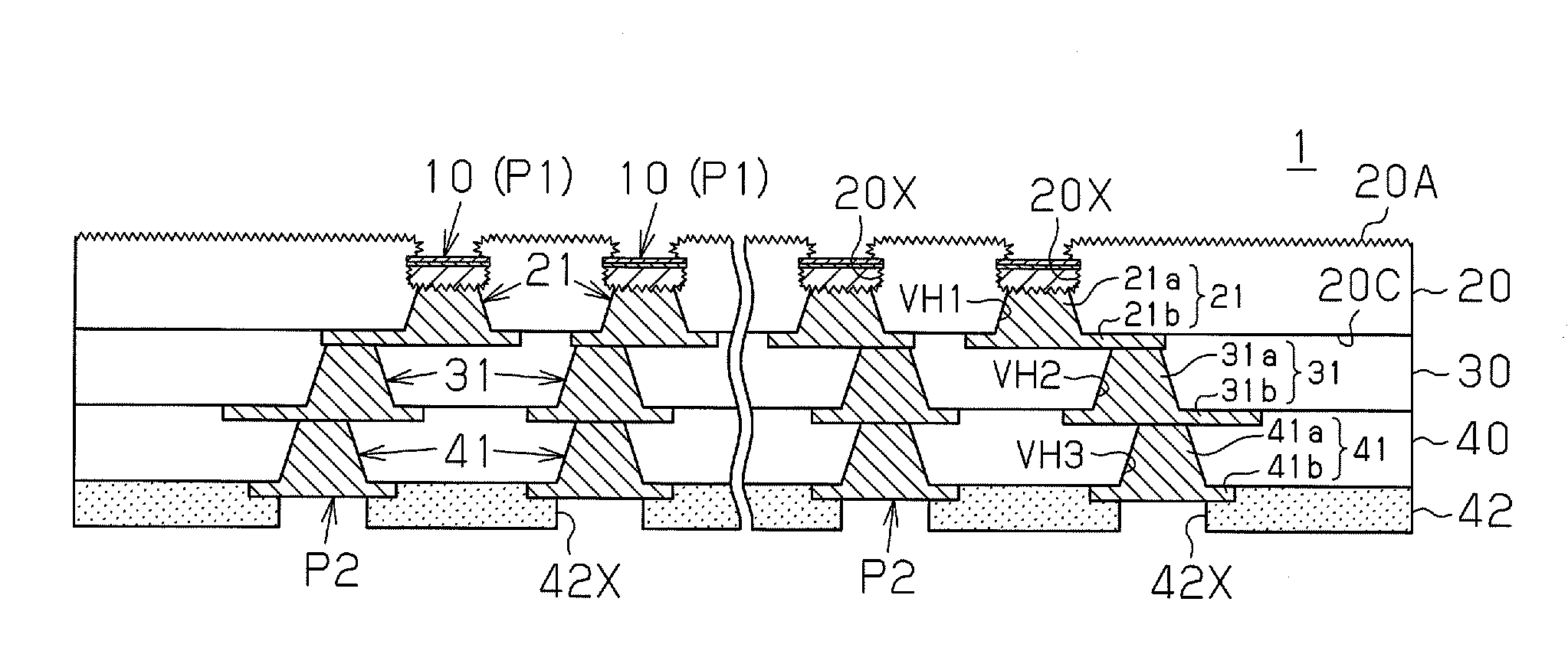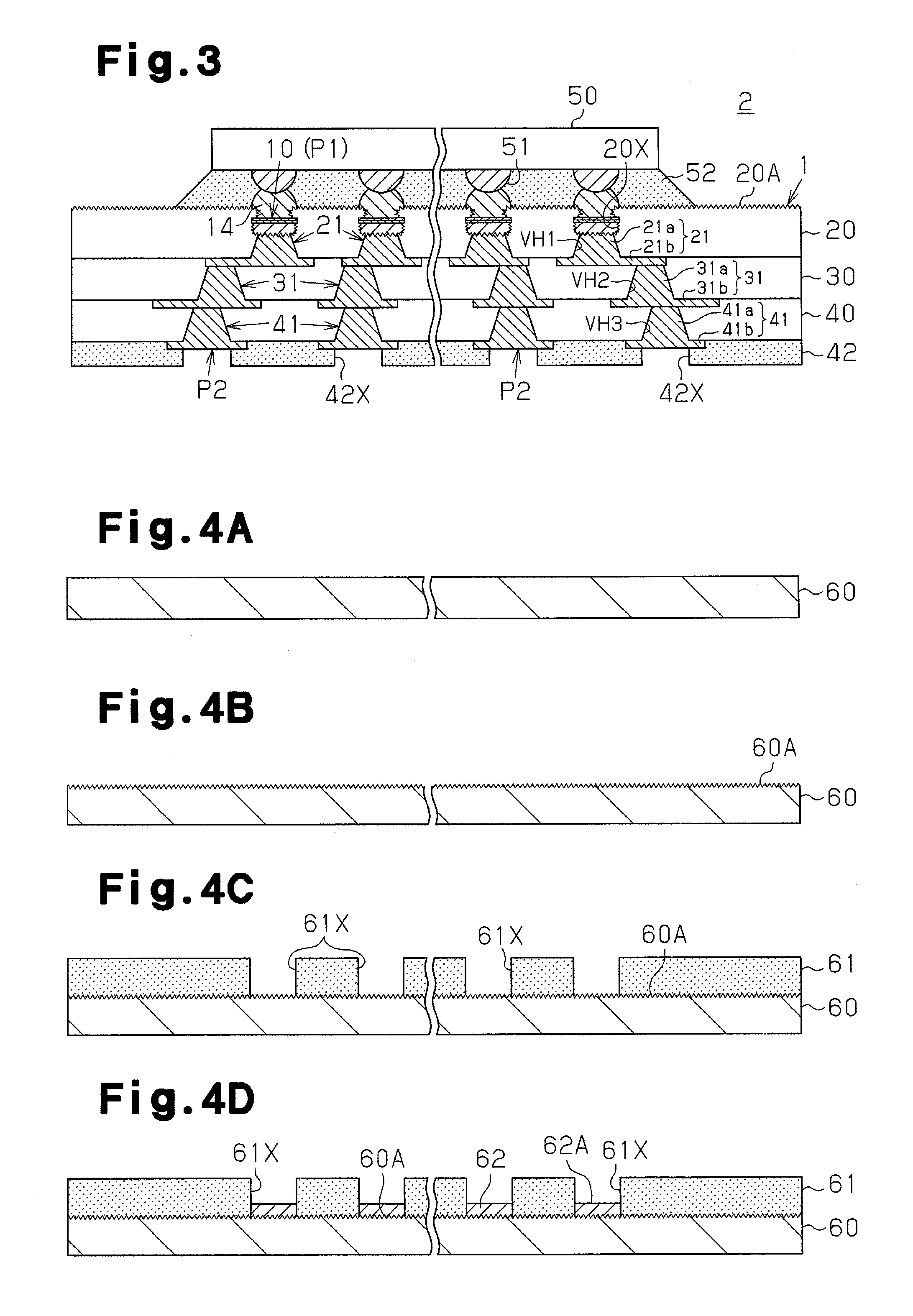Wiring substrate and method for manufacturing wiring substrates
a wiring substrate and manufacturing method technology, applied in the direction of cable/conductor manufacturing, semiconductor/solid-state device details, coatings, etc., can solve the problems of reducing the thickness of the entire wiring substrate, reducing the drop impact resistance, and osp film being prone to oxidization and discoloration
- Summary
- Abstract
- Description
- Claims
- Application Information
AI Technical Summary
Benefits of technology
Problems solved by technology
Method used
Image
Examples
first embodiment
[0032]A first embodiment will now be described with reference to FIGS. 1 to 9.
[0033][Wiring Substrate]
[0034]First, the structure of the wiring substrate 1 will be described.
[0035]As illustrated in FIG. 1, the wiring substrate 1 includes first to fourth wiring layers 10, 21, 31, and 41 that are laminated with first to third insulating layers 20, 30, and 40 located in between. Via holes VH1, VH2, and VH3 filled with vias 21a, 31a, and 41a are formed in the insulating layers 20, 30, and 40, respectively. In this manner, the wiring substrate 1 of the present embodiment has the form of a “coreless substrate” and does not include a supporting base material. This differs from a wiring substrate manufactured through a typical build-up process in which a wiring substrate includes a desired number of build-up layers sequentially formed on one side or two sides of a core substrate, which serves as a supporting base material.
[0036]As the material of the second to fourth wiring layers 21, 31, an...
second embodiment
[0087]A second embodiment will now be described with reference to FIGS. 10 to 15. Like or same reference numerals are given to those components that are the same as the corresponding components illustrated in FIGS. 1 to 9. Such components will not be described in detail.
[0088][Wiring Substrate]
[0089]First, the structure of the wiring substrate 3 will be described.
[0090]As illustrated in FIG. 10, the wiring substrate 3 includes first to fourth wiring layers 10, 21, 31, and 41 that are laminated with first to third insulating layers 70, 30, and 40 in between. Via holes VH1, VH2, and VH3 are formed in the insulating layers 70, 30, and 40 and filled with vias 21a, 31a, and 41a. Like the wiring substrate 1 of the first embodiment, the wiring substrate 3 of the present embodiment is a “coreless substrate” that does not include a supporting base material.
[0091]Recesses 70X, which expose the pads P3, are formed on a first insulating layer 70, which is the outermost layer on one side of the ...
PUM
 Login to View More
Login to View More Abstract
Description
Claims
Application Information
 Login to View More
Login to View More - R&D
- Intellectual Property
- Life Sciences
- Materials
- Tech Scout
- Unparalleled Data Quality
- Higher Quality Content
- 60% Fewer Hallucinations
Browse by: Latest US Patents, China's latest patents, Technical Efficacy Thesaurus, Application Domain, Technology Topic, Popular Technical Reports.
© 2025 PatSnap. All rights reserved.Legal|Privacy policy|Modern Slavery Act Transparency Statement|Sitemap|About US| Contact US: help@patsnap.com



